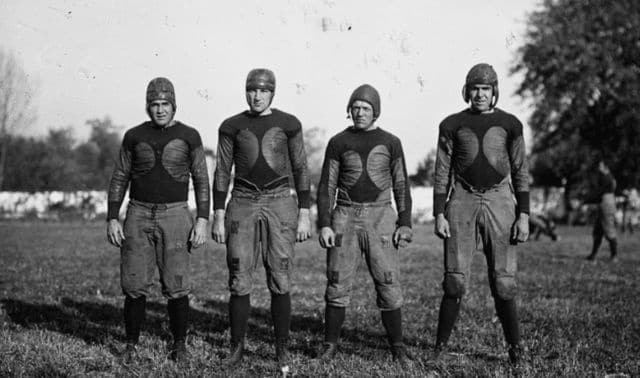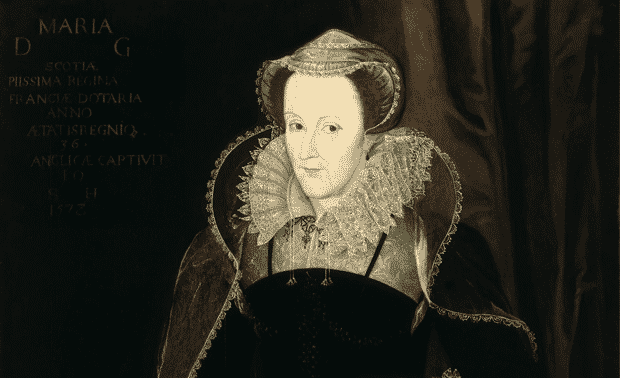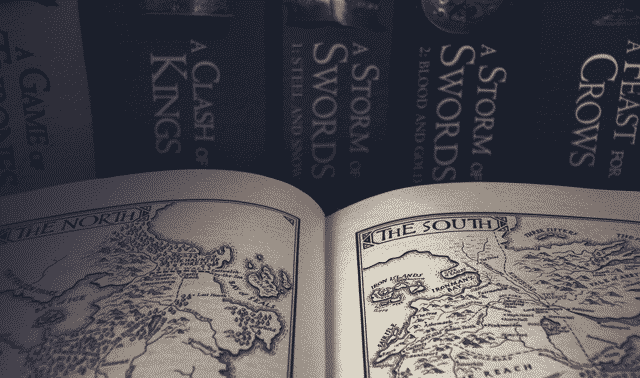Sign up for the Family Tree Newsletter Plus, you’ll receive our 10 Essential Genealogy Research Forms PDF as a special thank you!
Get Your Free Genealogy Forms
"*" indicates required fields
We always look forward to watching the tempestuous relationship between Thor and his siblings play out on the big (and small) screen. Loosely inspired by legends and myths of the Norse gods and their version of the apocalypse, the Marvel Cinematic Universe movies depict Loki as a trickster with a thirst for power. Having a mischievous, shape-shifting god in the family was always going to make family reunions interesting, but will it bring about the apocalypse—or prevent it?
Here’s a wrapup of Loki’s family tree in the Marvel Cinematic Universe (MCU), as well as how it was shaped by the original Norse mythology. Spoilers ahead for all MCU properties, including the Thor films and the Disney+ series Loki.
Frosty Relations
In the first movie of the Thor trilogy, we are introduced to the Frost Giants, who invade a Norwegian village. Odin and the Asgardians save the day and drive Giants back to their own realm. The All-Father takes the Giants’ source of power to Asgard, where it is heavily guarded. Then, the Asgardians retreat from other worlds and fall into myth. Odin tells this story to his young sons, Thor and Loki. He finishes by saying, “Only one of you can ascend to the throne, but you were both born to be kings.”
The next scene shows the brothers as adults. Thor is fated to be king, but suffers a major setback due to his own arrogance. Loki’s manipulations push Thor to travel to Jotunheim, where they attack the Frost Giants. During the fight, Loki discovers that the Frost Giants’ touch does not hurt him. While Thor is banished, Loki learns the truth: Laufey, the Frost Giants’ king, had a son who was deemed too small and thus abandoned. When Odin came across the babe, he took him to raise as his own in an attempt to unite the two warring factions.
In the original mythology, Loki is not adopted by Odin. Instead, Loki and Thor are blood brothers who fight alongside each other. While not one of the Aesir (the most revered deities in Norse mythology), Loki is nevertheless heavily involved in their affairs.
Described as handsome and cunning, Loki embroils the Aesir in many conflicts, and (to his credit) often helps them out of those same conflicts. While he is a troublemaker, it tends to be more benign in mythology—right up until he kills Balder, Odin’s beloved son. This rift leads to Loki’s punishment and his turning fully against the Aesir when he’s freed during Ragnarok.
A Chip Off the Old (Ice) Block
In the MCU, Loki was abandoned as a babe to die. And while Odin may have had secondary motives for taking him and concealing his identity, Loki seems to have been much loved by his father and brother, and perhaps even the favored son of Odin’s wife, Frigga.
His relationship with his biological father, Laufey, is much cooler. While Loki does allow them into Asgard and to Odin’s chambers, he then turns on the frost giants, killing Laufey and setting up a war with the Frost Giants.
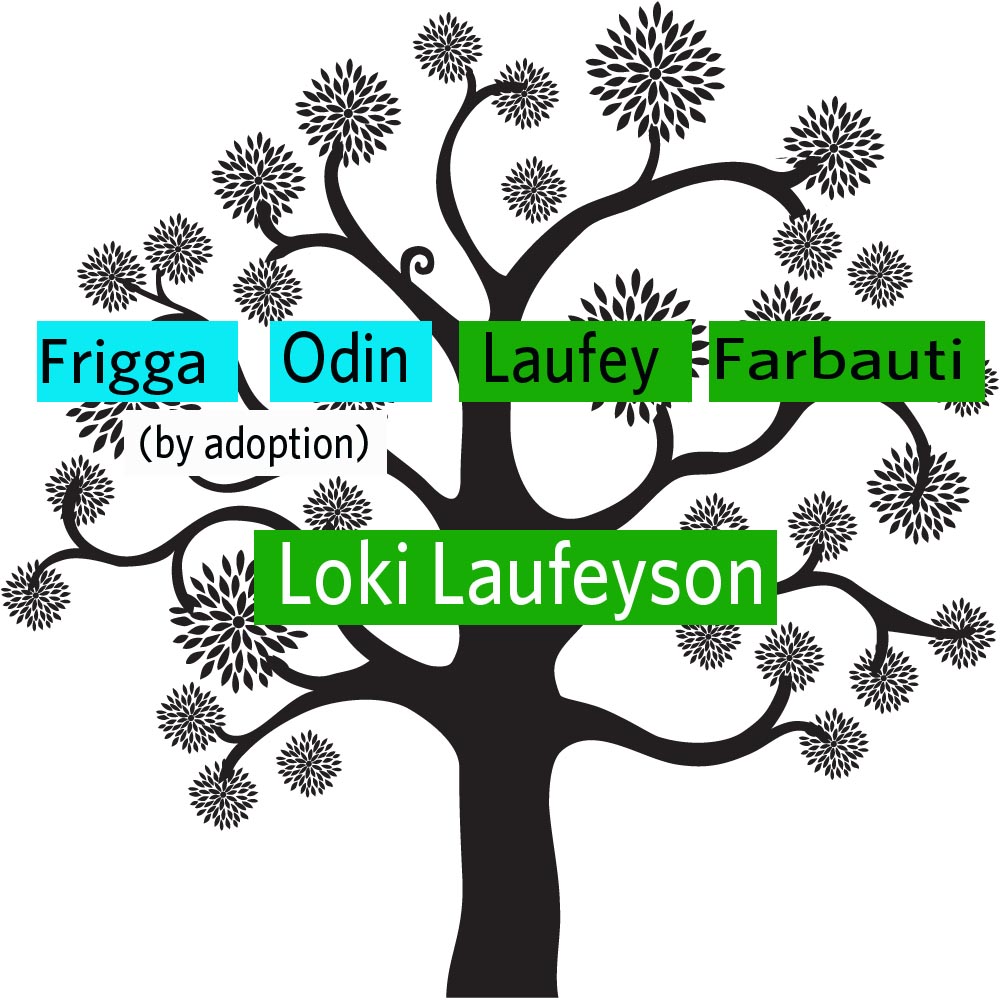
This diverges from the mythology as well, where Laufey is Loki’s mother and the consort of Farbauti. The rest of his family consists of his brothers, Byleistr and Helblindi. It’s interesting that in the mythology, his last name is matronymic, rather than patronymic.
Ragnarok and a Hard Place
In the traditional Norse mythology, the family trees are a bit more twisted. Aside from Thor, Odin’s offspring include Baldr (or Balder), Hodr, and Bragi as well as Ullr. Unlike the movies, where Frigga is Thor’s mother, only Baldr is conceived with her in the original source material. Thor’s mother is Jord and Ullr’s mother is Sif.
The gods may have called Loki the “Father of Lies,” but it was his children that proved truly terrifying. Loki gives birth to an eight-legged horse, Sleipnir, and this unusual equine becomes Odin’s own trusty steed. (In the movies, Sleipnir is seen briefly with Odin astride into Jotunheim to rescue Thor and the others, but there is no indication to his parentage.)
Sleipnir is, however, the least of the Aesir’s concerns. Loki’s affair with Angrboda, the giantess, produces three offspring: Fenrir the wolf, Jormugand the great serpent, and Hel (or Hela), who oversees the land of the dead. These children are considered quite dangerous, so the Aesir, led by Odin, kidnapped the children from Angrboda and carried them back to Asgard.
Odin threw the great serpent, Jormungand, deep into the seas of Midgard, where he grew so thick and long that he bit his own tail. He then sent Hel into Niflheim, the world beneath the world with the decree that she should look after those who died of illness or old age.
The Family Ties that Bind
The gods considered Fenrir the wolf so dangerous that they have him bound by a magical fetter called Gleipnir, made by the dwarves. This, they bind to a rock, bury it a mile deep in the earth, then set another rock on top of that to ensure the wolf does not escape. They also prop his mouth open with a sword so he cannot bite. There Fenrir waits for Ragnarok to come, at which time he will be freed, and most likely very angry.
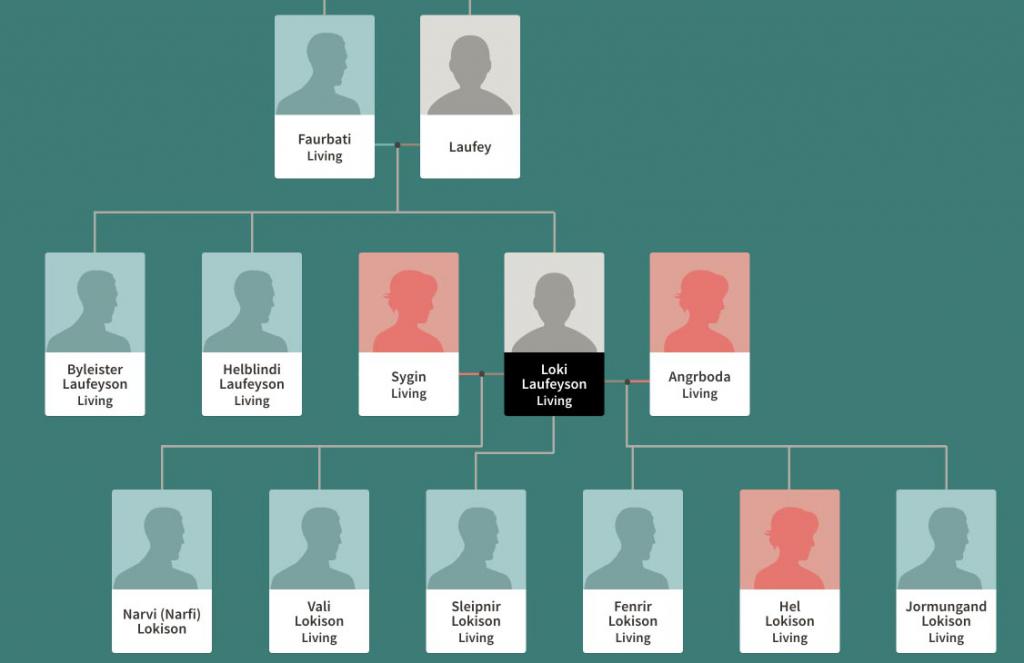
Fenrir isn’t the only one to be chained to a rock. Having killed Baldr, Loki escaped to a deserted part of Earth and found himself a hiding place near Franang’s Falls. The shapeshifter would spend his days as a salmon, hoping to escape capture, but after creating a fine fishing net, he is forced to leave it behind as he took to the water again. Seeing the net, Thor and the other gods hunting him determine that Loki would likely take the form of a fish to evade capture, so they used the net to catch him.
In the Binding of Loki, the actions of the father have terrible consequences on his children. While these two sons are not named elsewhere, Vali and Narvi (or Nari) suffer no mercy from the gods. Loki’s pursuers turn one son into a wolf, who then tears his brother to pieces. The gods then use Narvi’s entrails to bind Loki to three slabs of rock.
That, however, is not considered punishment enough. The Aesir fasten a vile snake high above the trickster god so the venom would drip on Loki’s face. His wife, Sygin, is left to hold a bowl over his face, attempting to keep the venom from reaching his face, but she must empty the bowl, and so Loki is continuously punished until Ragnarok come and he is released.
One Giant Family Reunion?
Marvel’s version of Ragnarok had a more lighthearted approach, though it was quite the family reunion. Aside from Hela, the goddess of death (who is Loki’s adopted sister rather than his daughter), there’s also a brief fight scene involving a giant wolf. Could it be Fenrir? If the Norse myths are to be believed, Fenrir and his tricky father will be freed of his bindings and they will fight against the gods. But in the MCU, Loki has not suffered the same punishments leading up to the end of the world.
Alternate Lokis
Loki’s shapeshifting ability takes another form in the television series Loki, a Disney+ venture that explores alternate timelines. In it, Loki as we know him is captured by the mysterious Time Variance Authority after stealing the mystical Tesseract during the events of Avengers: Endgame. Throughout the series, he encounters several versions of himself, each from an alternate universe: Sylvie (a female Loki), “Old Man” Loki who escaped Thanos’ clutches in Avengers: Infinity War, “Boastful” Loki who wields a hammer and assembled the Infinity Stones, “Kid” Loki who killed Thor as a child, and even an alligator Loki. These Loki “variants” don’t necessarily pull inspiration from Norse mythology. But they are a reminder that you never know where—or how—Loki will appear.
Last updated: July 2021.
ADVERTISEMENT

